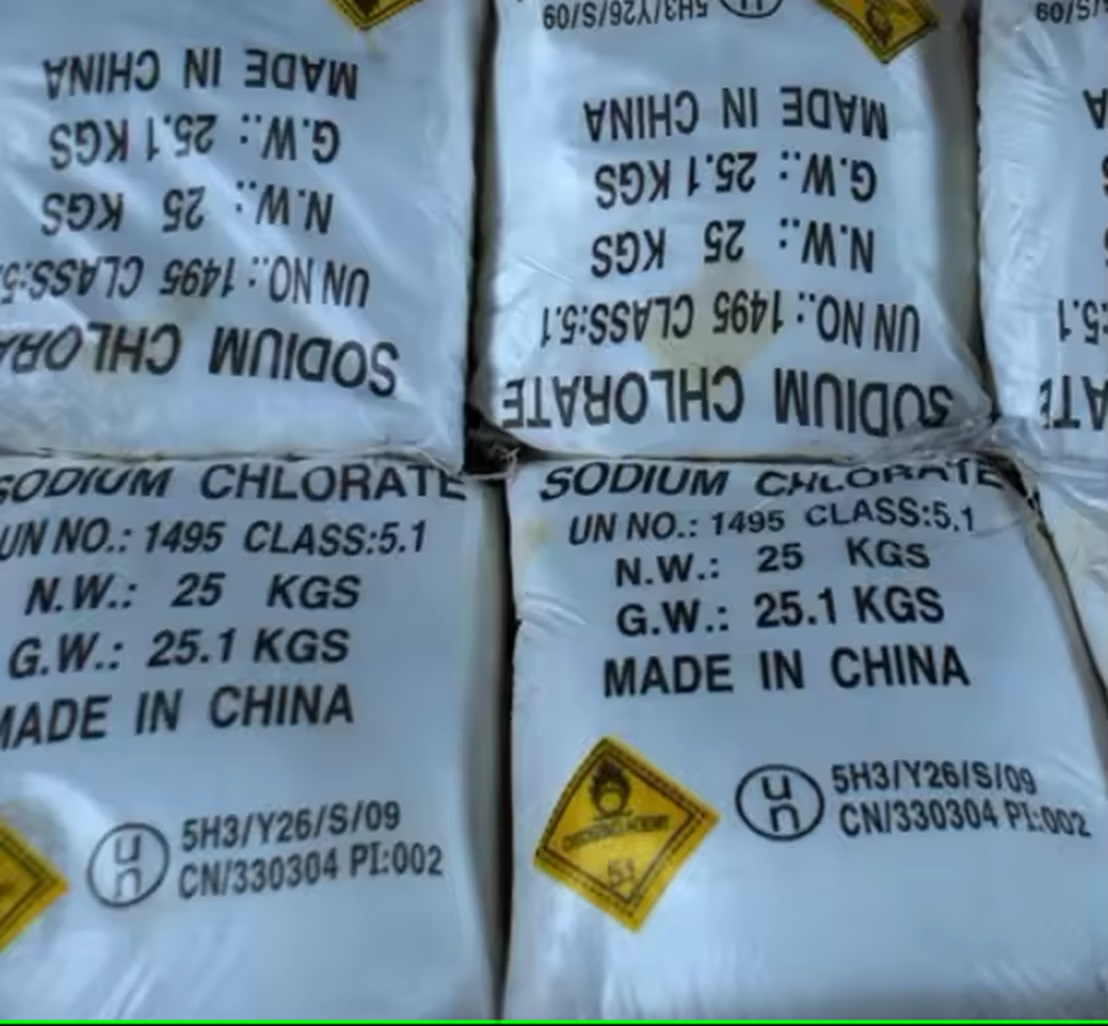Construction, Mining, Metal
Do you have questions?
We unleash your business potential by maximize the business innovation.
Send EmailSodium Chlorate, Natrium Chlorat, 7775-09-9
CAS: 7775-09-9
Molecular Formula: NaClO3
Names and Identifiers
| Name | Sodium Chlorate |
| Synonyms | Natriumchlorat Sodium Chlorate chlorate de sodium Sodium chlorate (industrial) |
| CAS | 7775-09-9 |
| EINECS | 231-887-4 |
| InChI | InChI=1/ClHO3.Na/c2-1(3)4;/h(H,2,3,4);/q;+1/p-1 |
Physico-chemical Properties
| Molecular Formula | NaClO3 |
| Molar Mass | 106.441 |
| Melting Point | 248-261℃ |
| Water Solubility | 1000 g/L (20℃) |
| Physical and Chemical Properties | Characteristics of colorless or white cubic crystal system. The taste was salty and cool. melting point 255 ℃ relative density 2.490 solubility soluble in water, soluble in ethanol, liquid ammonia, glycerol. |
| Use | Mainly used for the manufacture of chlorite and perchlorate, also used as herbicides, oxidants |
Risk and Safety
| Hazard Symbols | O - Oxidizing agent Xn - Harmful  N - Dangerous for the environment  |
| Risk Codes | R22 - Harmful if swallowed R51/53 - Toxic to aquatic organisms, may cause long-term adverse effects in the aquatic environment. R9 - Explosive when mixed with combustible material |
| Safety Description | S13 - Keep away from food, drink and animal foodstuffs. S17 - Keep away from combustible material. S46 - If swallowed, seek medical advice immediately and show this container or label. S61 - Avoid release to the environment. Refer to special instructions / safety data sheets. |
| UN IDs | UN 1495 |
Upstream Downstream Industry
| Raw Materials | Sodium carbonate Lead (II) sulfate Barium chloride Sodium Chloride Sodium hydroxide Hydrochloric acid |
| Downstream Products | SODIUM CHLORITE Potassium perchlorate Manganese(IV) oxide Platinum Palladium Phenethyl alcohol Styrene oxide Sodium Chlorate Calcium Iodate Perchloric acid |
Nature
white powder. Melting point 248 °c (decomposition). The solubility in water is 790g/L at 0 ℃, which is soluble in ethanol and ethylene glycol. It is easy to decompose and release oxygen when heated to above 300 ℃. In neutral or weak alkaline solution, the oxidation ability is low, but in acidic solution or in the presence of induced oxidant and catalyst, it is a strong oxidant. The action with acids releases chlorine dioxide. Mixing with sulfur, phosphorus and organic matter or being impacted is susceptible to combustion and explosion. Corrosive to zinc and carbon steel. Deliquescence, high humidity in the air can absorb water vapor solution.
Preparation Method
It can be obtained by electrolysis of a concentrated acid solution of sodium chloride at 80 to 90 °c.
Use
killing herbicides. Widely used in non-cultivated land and reclamation of wild land when the killing of weeds. A variety of plants can be killed, the Compositae, Gramineae plants have root effect, the deep-rooted perennial grass weed effect is remarkable. All green plants have strong Phytotoxicity, plant roots and stems have a role in its absorption. In general, the application of medicine in the period of vigorous plant growth depends on the type, quantity and size of weeds. Spraying with water or directly spraying powder, can be mixed with residual organic herbicides such as herbicide, grass, grass, grass, grass, and so on.
Safety


